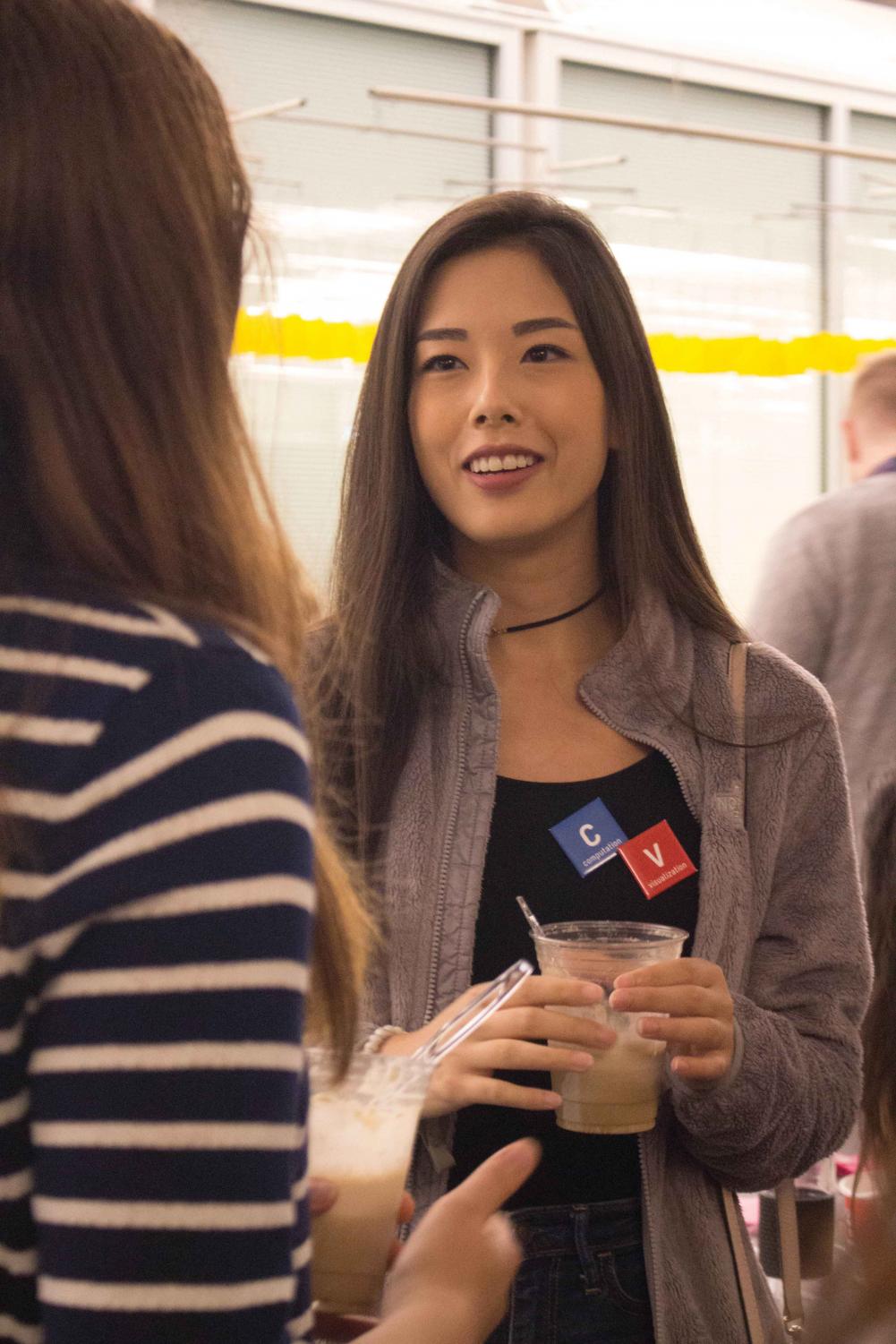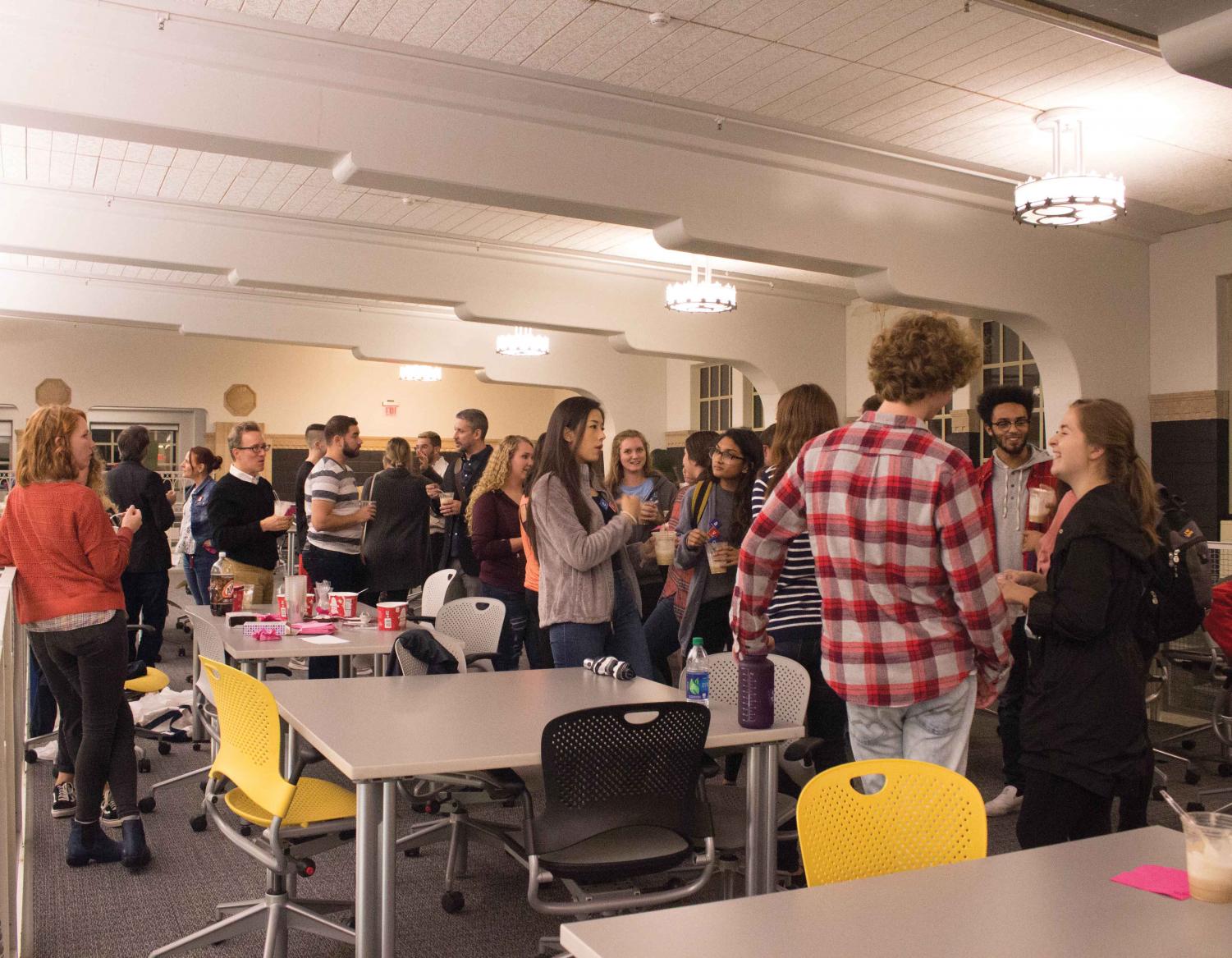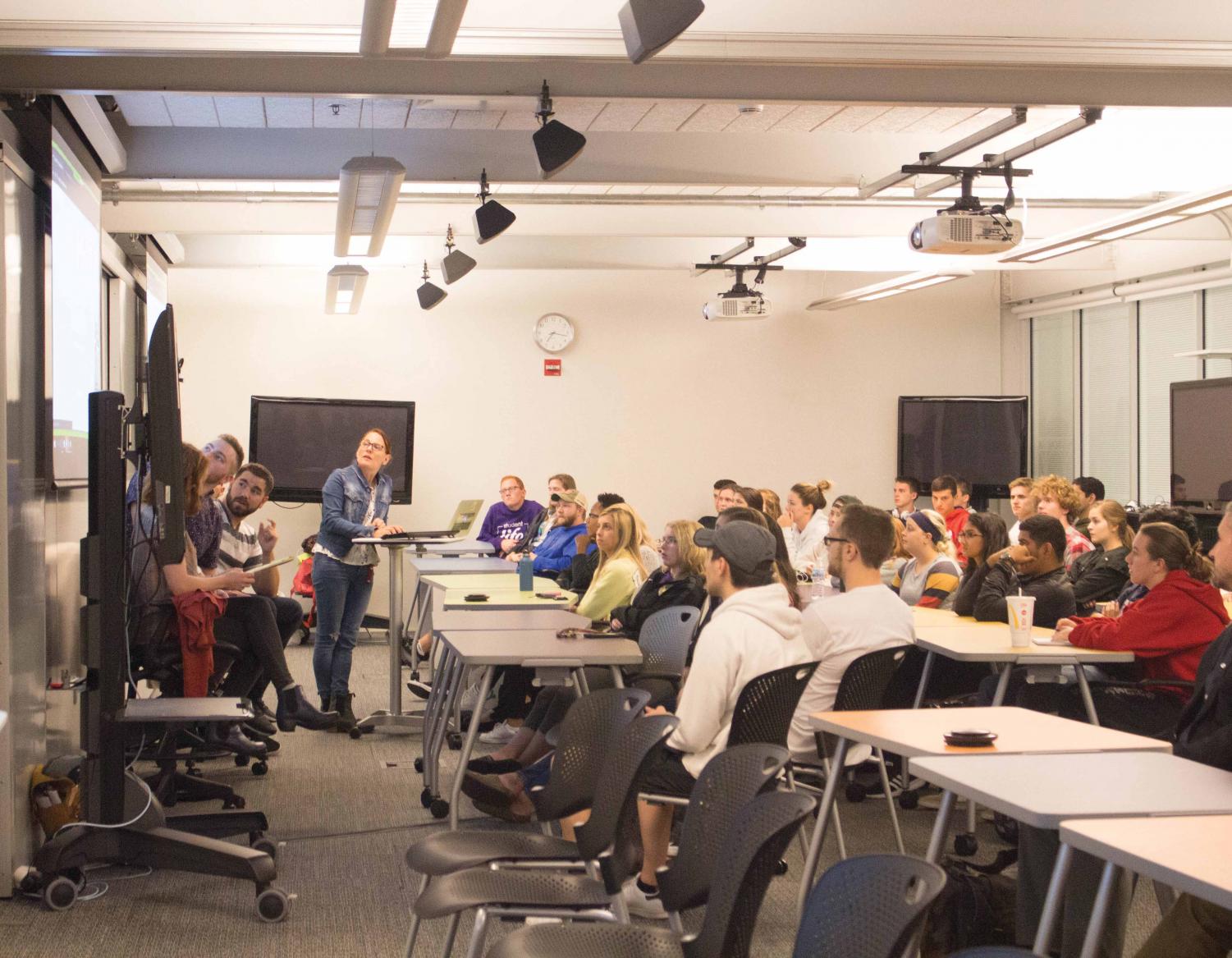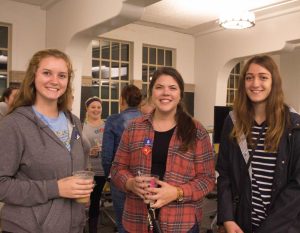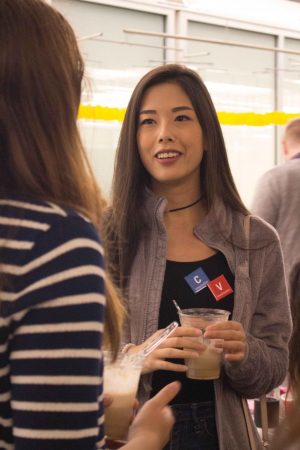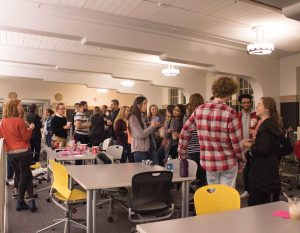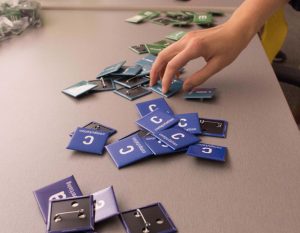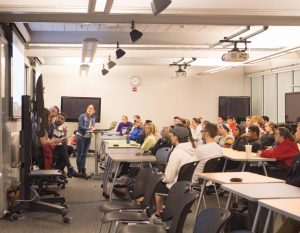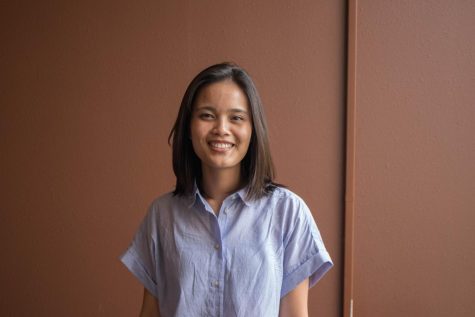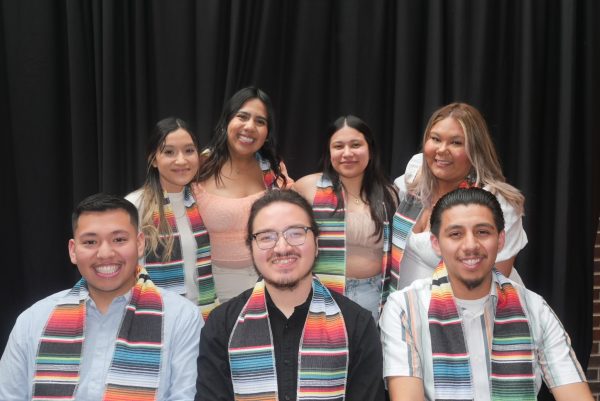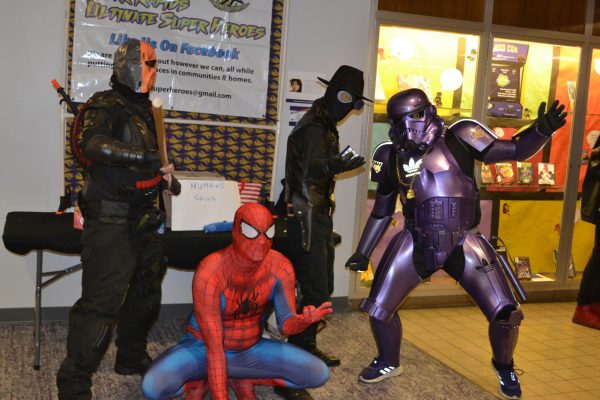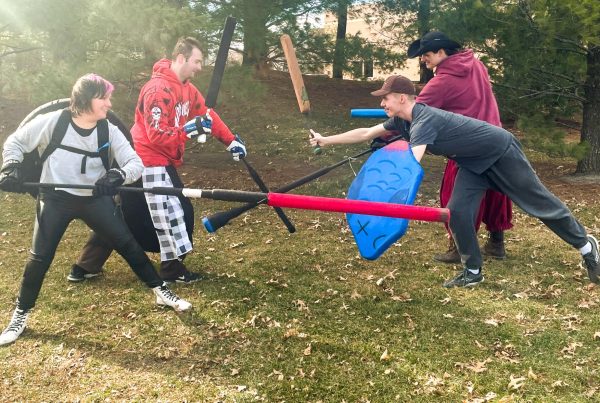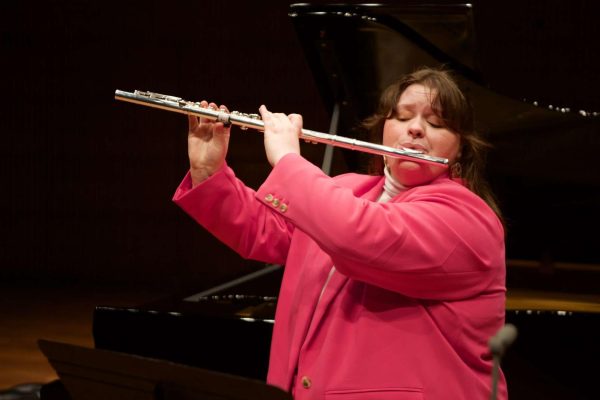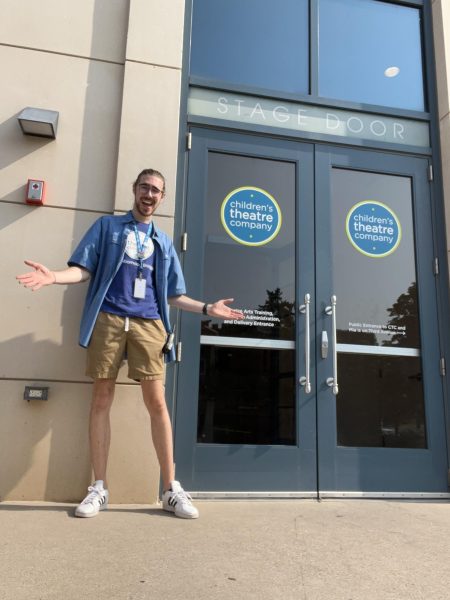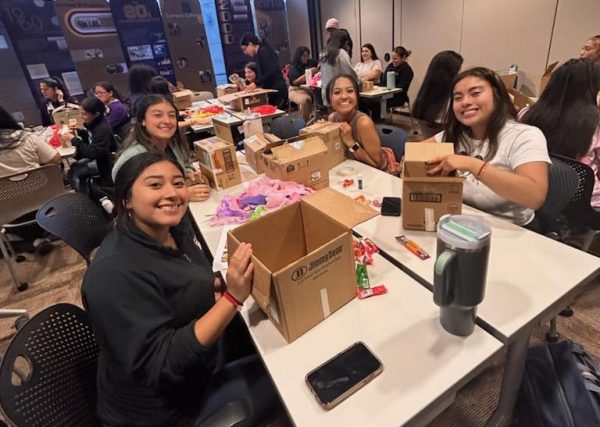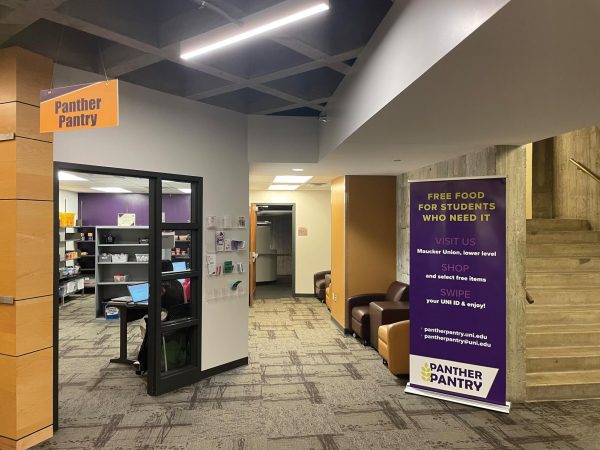IDS program teaches collaboration, digital skills
Sep 24, 2018
Students and faculty in the Interactive Digital Studies (IDS) program gathered on Friday, Sept. 21 in the Innovative Teaching and Technology Center to hear from IDS alumni and socialize with fellow IDS students.
IDS is an interdisciplinary program based in the communication studies department, but it spans several areas of study. IDS majors choose two bundles — minors choose one — out of eight options: advertising, computation, imaging, learning, music, history, writing and visualization.
“There’s eight departments, and we are covering every single college in the whole university,” explained Bettina Fabos, IDS professor and one of the program’s founders. “We are connecting the digital classes that are available across campus.”
IDS students take three foundations courses plus five courses from each bundle. They complete their degree with a practicum, collaborating with other IDS students on one big project.
At the event, Fabos announced the possibility of a new web development bundle being added to the program.
“We feel like it’s the one missing link in the IDS program right now, but we need to prove it to the upper administration that it is really a need,” Fabos said.
She explained the meaning behind the word “interactive” in the program’s name.
“It’s ‘interactive’ because it’s about the web, and it’s using the web in a way so that you’re engaging with it and making things happen,” Fabos said.
Friday’s event featured a panel of past and current IDS students who had worked with Fabos on “Proud & Torn.” The award-winning online project — a 16-chapter “graphic novel put to the web,” as Fabos worded it — creatively chronicles a timeline history of Hungary.
Three students from the original “Proud & Torn” team were present in person: designer Dana Potter and web developers Collin Cahill and Jacob Espenscheid. Isaac Campbell, who worked on animations for the website, joined via video chat from Hungary, where he was working on a different project.
Also in attendance were members of what Fabos dubbed the “finishing squad” — younger IDS students who helped later on in the project. Connor Thorson and Adrian Mitchell, who both graduated last May, called in from Portland, OR and Des Moines, respectively. Current IDS student Brendan Benson was also present to share his experiences with “Proud & Torn.”
The common theme of the evening was teamwork and collaboration.
“You take one person, you start adding these magnificent people, and all of a sudden, you start building something that you could have never done by yourself,” Fabos said.
Campbell discussed the incredible work ethic and ambition of each team member.
“It became very apparent early on, working with this team, that there wasn’t an opportunity for mediocrity,” Campbell said. “I mean, every person was taking what they were doing and learning and pushing it forward and making it more excellent and making it as good as it could [be].”
Immediately following the panel was a root beer float social. Students were able collect and don buttons for their respective bundles and mingle with other IDS students.
One such student was Monica Dhumne, a junior IDS major with visualization and marketing bundles. Dhumne first came to UNI as a business major but switched when she heard about IDS.
Dhumne stressed the importance of reaching out to instructors and classmates.
“I know it sounds really cliche—but I feel really within this major, it kind of drives us and forces us to be the creative person that we want to be,” Dhumne said. “And in order to do that, you have to really reach out and go out of your comfort zone and say, ‘Hey, I have this idea. How can we make this into something bigger?’”
The IDS seed was first planted in 2007, when John Fritch, dean of the College of Humanities, Arts and Sciences, hired Fabos to establish an IDS program. It officially launched in 2012.
“We sort of built a program on the cheap because most of the classes were already existing,” Fabos said. “So it was very good for the university, but it was also very innovative because most students really like customizing their interests; they like being able to choose areas within a larger area and that’s what IDS really offers.”
Fabos was quick to mention that she wasn’t the only one contributing to the program launch.
“Don’t ever give me credit for it; I was an instigator, but I was not the only person,” Fabos said. “There was a lot of us who met regularly and we created bundles and we worked with each other.”
According to Fabos, UNI’s IDS program is unique to region institutions. Hawkeye Community College has a similar program; however, it is more skills-based than UNI’s.
“What we’re doing is we’re really making sure people understand digital citizenship,” Fabos said. “And we are trying to mold the kind of student who is curious student, [. . .] who is a self-learner, who becomes very confident with technology and very adaptive.”



